Art hodontics: the Search for ‘Ultimate Beauty’ in Philosophy, Classicism and Orthodontics
From Volume 47, Issue 1, January 2020 | Pages 43-50
Article

Until the eighteenth century, most philosophical accounts of beauty, treated it as an objective quality, ie they located it in the beautiful object itself or in the qualities of that object. In ‘De Veritate Religione’, Augustine asks explicitly whether things are beautiful because they give delight, or whether they give delight because they are beautiful.1 Plato's account in the ‘Symposium’ and Plotinus' ideology in the ‘The Six Enneads’ connect beauty to a response of love and desire, but locate beauty itself in the regality of the Form, and the beauty of particular objects in their participation in the Form.2,3 Moreover, Plotinus' account in one of its moments addresses beauty as a matter of what one might term ‘formedness’: having the definite shape characteristic of the kind of thing the object is.
Though Plato and Aristotle disagree on the nature of beauty, they both regard it as objective in the sense that it is not localized in the response of the beholder. The classical conception treats beauty as a matter of representing definite proportions or relations among parts, sometimes expressed in mathematical ratios, for example, the ‘golden section’. The sculpture known as ‘The Canon,’ by Polykleitos, was held up as a model of harmonious proportion to be simulated by students and masters alike: beauty could be reliably achieved by reproducing its objective proportions (Figure 1). The debate of subjectivity vs objectivity will be continued in the next section.
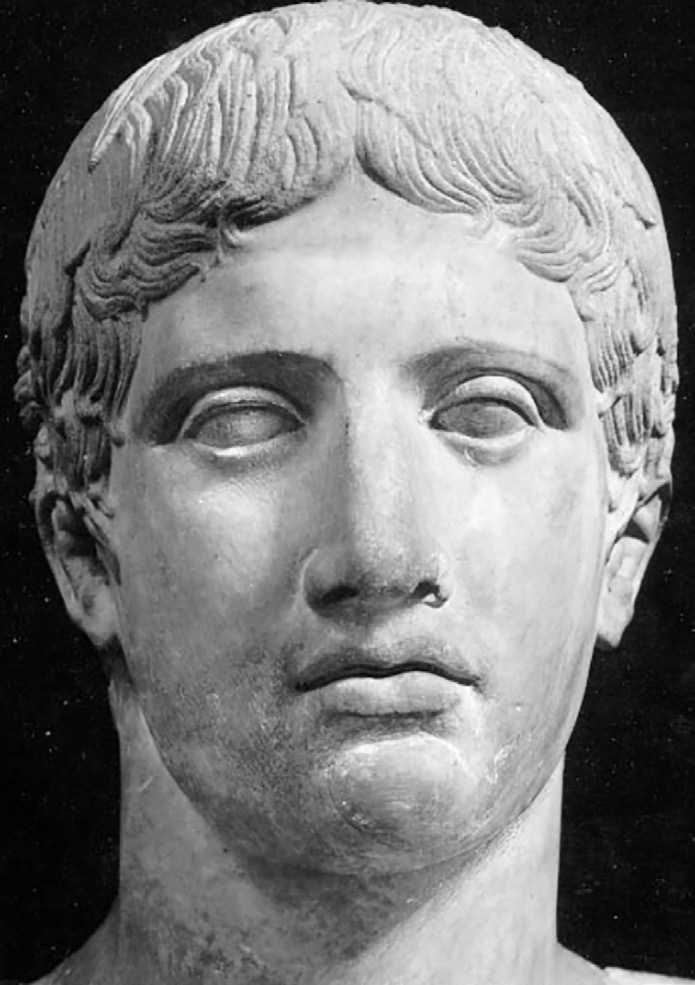
In this article, readers will be taken on an unparalleled journey to explore the philosophy and classicism in relation to facial beauty and discover how modern day orthodontics can achieve (or indeed undermine) the ideal harmonious facial forms.
Beauty in philosophy
Is beauty objective or subjective?
One of the most basic issues in the theory of beauty is whether it is subjective (ie located ‘in the eye of the beholder’) or whether it is an objective feature that follows certain predefined measures. Indeed, understanding this concept is of paramount importance to help us, clinicians, treat our patients to high aesthetic standards by applying objective measures, if we assume that beauty is not subjective.
Ancient and medieval accounts, for the most part, located beauty outside of anyone's particular experience. By the eighteenth century, Hume could write as follows, in his ‘Of the Different Species of Philosophy’: ‘Beauty is no quality in things themselves: It exists merely in the mind which contemplates them; and each mind perceives a different beauty. One person may even perceive deformity, where another is sensible of beauty; and every individual ought to acquiesce in his own sentiment, without pretending to regulate those of others’.4
Kant prefaces his discussion of the matter in ‘The Critique of Judgment’ (the Third Critique), at least as emphatically: ‘The judgment of taste is therefore not a judgment of cognition, and is consequently not logical but aesthetical, by which we understand that whose determining ground can be no other than subjective. Every reference of representations, even that of sensations, may be objective (and then it signifies the real element of an empirical representation), save only the reference to the feeling of pleasure and pain, by which nothing in the object is signified, but through which there is a feeling in the subject as it is affected by the representation’.5
Despite the above arguments, one should think that presumably, if beauty is entirely subjective, then it seems that the word has no (or indeed loses its) meaning, or that we are not communicating anything when we call something beautiful. For instance, although different people can differ in particular judgments, it is also clear that our judgments coincide to a remarkable extent: for example, it would be peculiar for anyone to deny that a blooming red rose or a spectacular sunrise was beautiful. However, at the same time, it seems incongruous and conflicting to say that beauty has no connection to subjective measures or that it is entirely objective.
Until the eighteenth century, most philosophical ideologies about beauty regarded it as an objective quality: they located it in the beautiful object itself or in the qualities of that object. In ‘De Veritate Religione’, Augustine beseeches specifically whether things are beautiful because they give delectation, or whether they give delectation because they are beautiful. He emphatically opts for the second.1
Eighteenth-century philosophers such as Kant and Hume perceived that something important was lost when beauty was treated solely as a subjective state. They felt, for example, that controversies often arise about the beauty of particular things and that, in such controversies, reasons can sometimes be given and will sometimes be found convincing. They thought that if beauty is completely relative to individual experiences, it abstains to be a paramount value.4,5
The influence of this series of thoughts on philosophical aesthetics has been tremendous. One might mention related approaches taken by such figures as Schopenhauer, Hanslick, Bullough and Croce, for example. A somewhat similar, though more adamantly subjectivist, line is taken by Santayana, who defines beauty as ‘objectified pleasure’.6 The judgment of something that it is beautiful responds to the fact that it induces a certain sort of pleasure; but this pleasure is attributed to the object, as though the object itself was having subjective states.
Is beauty in the eye of the beholder?
Crispin Sartwell, in his book ‘Six Names of Beauty’, attributes beauty neither exclusively to the subject nor to the object, but rather to the relation between them, and even more widely also to the situation or environment in which they are both embedded.7 Beauty, rather, emerges in situations in which subjects and objects are juxtaposed and connected.
Alexander Nehamas, in ‘Only a Promise of Happiness’, characterizes beauty as an ‘invitation to further experiences, a way that things invite us in, while also possibly repulsing us’.8 The beautiful object invites us to explore and interpret, but it also requires us to explore and interpret: beauty which is not to be regarded as an instantaneously apprehensible feature of surface.
After exploring, very briefly, the argument of subjectivity vs objectivity with regards to defining beauty, one should question the validity of the saying (by Molly Bawn, 1878) ‘beauty is in the eye of the beholder’.
Having looked at the philosophical concept of beauty, the classical concept will be examined before trying to understand what defines beauty in a clinical sense.
Beauty in classicism
The classical conceptions of beauty
Possibly one of the best descriptions about the classical definition of beauty was described by the art historian Heinrich Wölfflin.9 He described classical beauty, in ‘Italian Renaissance’ painting and architecture, as follows:9 ‘The central idea is that of perfect proportion. In the human figure, as in the edifice, this epoch strove to achieve the image of perfection at rest within itself. Every form developed to self-existent being, the whole freely co-ordinated: nothing but independently living parts. In the system of a classic composition, the single parts, however firmly they may be rooted in the whole, maintain a certain independence. It is not the anarchy of primitive art: the part is conditioned by the whole, and yet does not cease to have its own life. For the spectator, that presupposes an articulation, a progress from part to part, which is a very different operation from perception as a whole’.
The classical conception is that beauty consists of an arrangement of integral parts into a coherent whole, according to:
This is a primitive Western conception of beauty, and is incarnated in classical and neo-classical architecture, sculpture and literature wherever they appear.
Aristotle explains in the ‘Poetics’ that ‘to be beautiful, a living creature, and every whole made up of parts, must present a certain order in its arrangement of parts’.10
Symmetry as a requirement for beauty
In the ‘Metaphysics’, the ‘chief forms of beauty are order and symmetry and definiteness, which the mathematical sciences demonstrate in a special degree’.10 This view, as Aristotle implies, is sometimes narrowed down to a mathematical formula, such as the ‘golden section’, but it need not be thought of in such strict terms. The conception is exemplified above all in such texts as Euclid's ‘Elements’ and such works of architecture as the Parthenon (Figure 2), as well as the ‘Canon’ by the sculptor Polykleitos [late fifth century BCE] (Figure 1), and the drawing of a man's body in a Pentagram by Heinrich Agrippa (Figure 3).
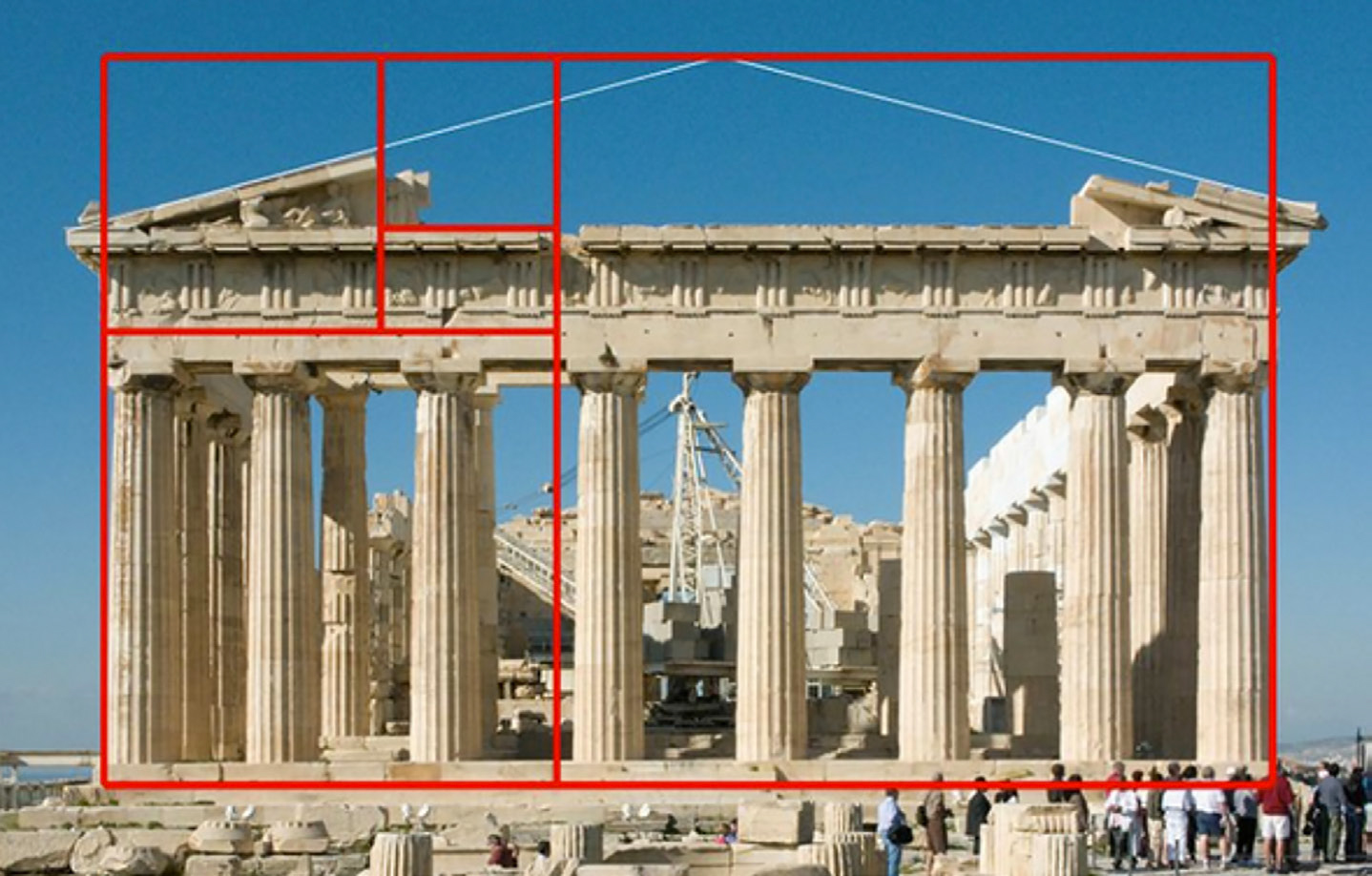
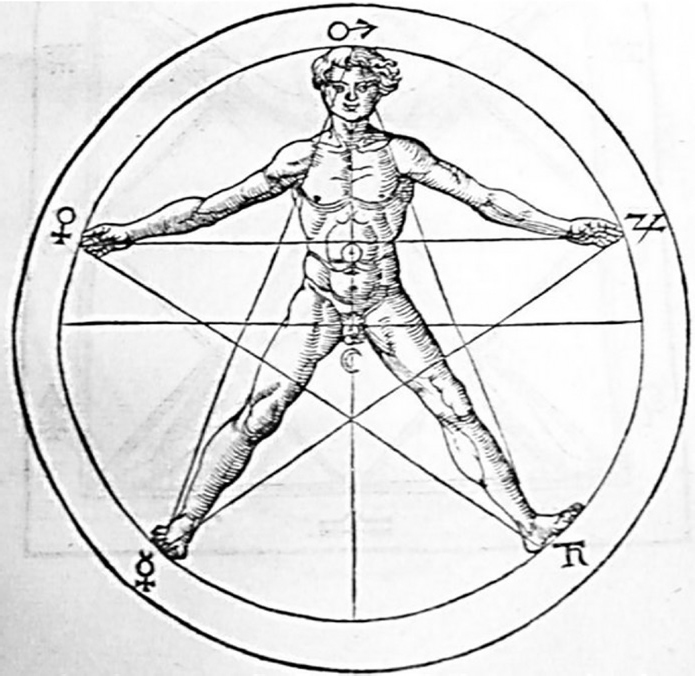
The ‘Canon’ was not only a statue designed to display perfect proportions, but a now-lost disquisition on beauty (Figure 1).
It is substantial to note that the concept of ‘symmetry’ in classical texts is distinct from its current use to indicate bilateral mirroring. It also refers precisely to the sorts of harmonious and measurable proportions among the parts characteristic of objects that are beautiful in the classical sense, which carried also a moral weight. For example, in the Sophist, Plato describes ‘virtuous souls’ as symmetrical.2
Symmetry is also the appropriate harmony arising out of the details of the work itself: the correspondence of each given detail to the form of the design as a whole. As in the human body, from cubit, foot, palm and other small parts come the symmetric quality of harmony.11
Aquinas says that there are three requirements for beauty:12
Francis Hutcheson, in the eighteenth century, gives what may well be the clearest expression of the view: ‘What we call beautiful in objects, to speak in the mathematical Style, seems to be in a compound ratio of uniformity and variety; so, that where the uniformity of bodies is equal, the beauty is as the variety; and where the variety is equal, the beauty is as the uniformity.’13
Facial profile in classical arts
Searching Leonardo da Vinci's archives revealed few portraits which appear to depict a common facial profile (in other words, skeletal patterns), that were mostly Class I or mild Class II skeletal patterns. In the two examples, Figures 4 and 5, both profiles show a mild retrusion of the mandible in profile with reduced labio-mental angles. Similarly, searching Pablo Picasso's archives revealed only one portrait in profile (Figure 6). That is of Jacqueline Roque whom he met in 1953 at the pottery. Again, this reveals a mild Class II skeletal pattern. Does this mean that Class II and Class I skeletal patterns were perceived to be the most attractive by Da Vinci and Picassoff Perhaps the answer is in the mind of the beholder!

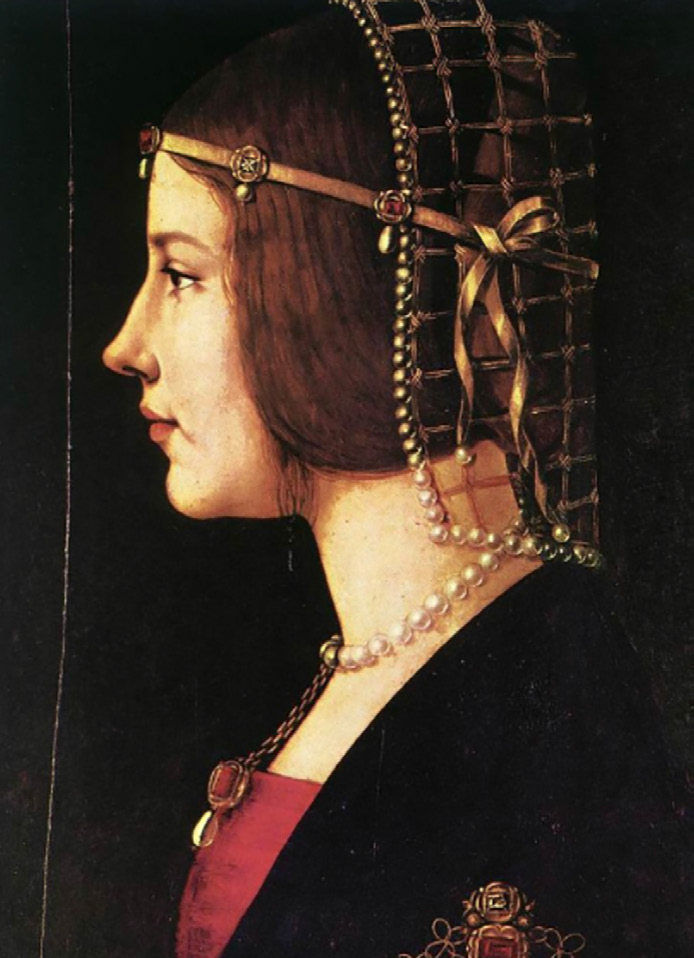

Having looked at the philosophical and classical concepts of beauty, it becomes clear that understanding the historical development of our understanding of beauty in general and the human face in particular is imperious, permitting the weighing and evaluation of the interrelationships between art and clinical practice. In the next section, the orthodontic implications of the ‘ideal facial form’ will be briefly explored in an evidence-based manner, with particular reference to the literature.
Beauty in orthodontics
Anthropometric proportions
Having explored the philosophical and classicist conceptions of beauty, one can deduce that beauty is not an exact science, but rather a complex interplay between objective standards and subjective views. However, in some medical and dental fields, plastic surgery and orthodontics for instance, an emphasis is placed on the fact that specific systematic proportions (for example, skeletal pattern, facial height, width and symmetry) are indeed essential in assessing facial harmony.
Therefore, from a scientific point of view, beauty (of the face in this context) is defined by the harmony of proportions and symmetry.14,15
Ideal proportions
Ideal proportions are directly related to the so-called ‘divine proportions’ and the most important value in relation to these proportions is 1: 1.618.14 The ‘divine proportion’ is not a new concept. It was first described by the ancient Greek sculptor Phidias (Figure 7), and it was scientifically revisited by Filius Bonacci, discoverer of the numerical value of the divine proportions (Figures 8 a and b). In dentistry, in general, of importance is the divine proportions of the human face. More specifically, this particularly applies to orthodontics, given that the objectives to be achieved at the end of the treatment are not only functional stability and smile aesthetics, but also facial aesthetic improvement.14
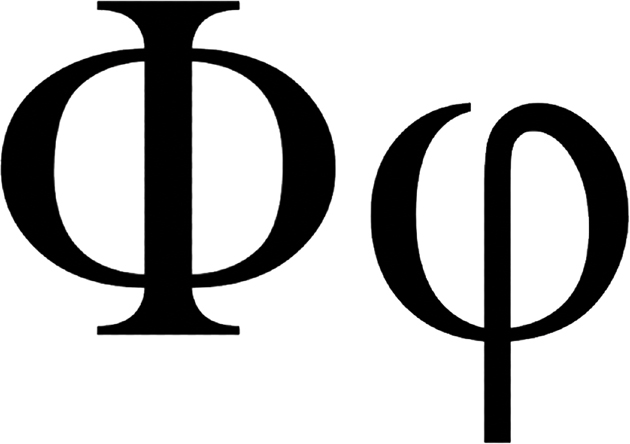
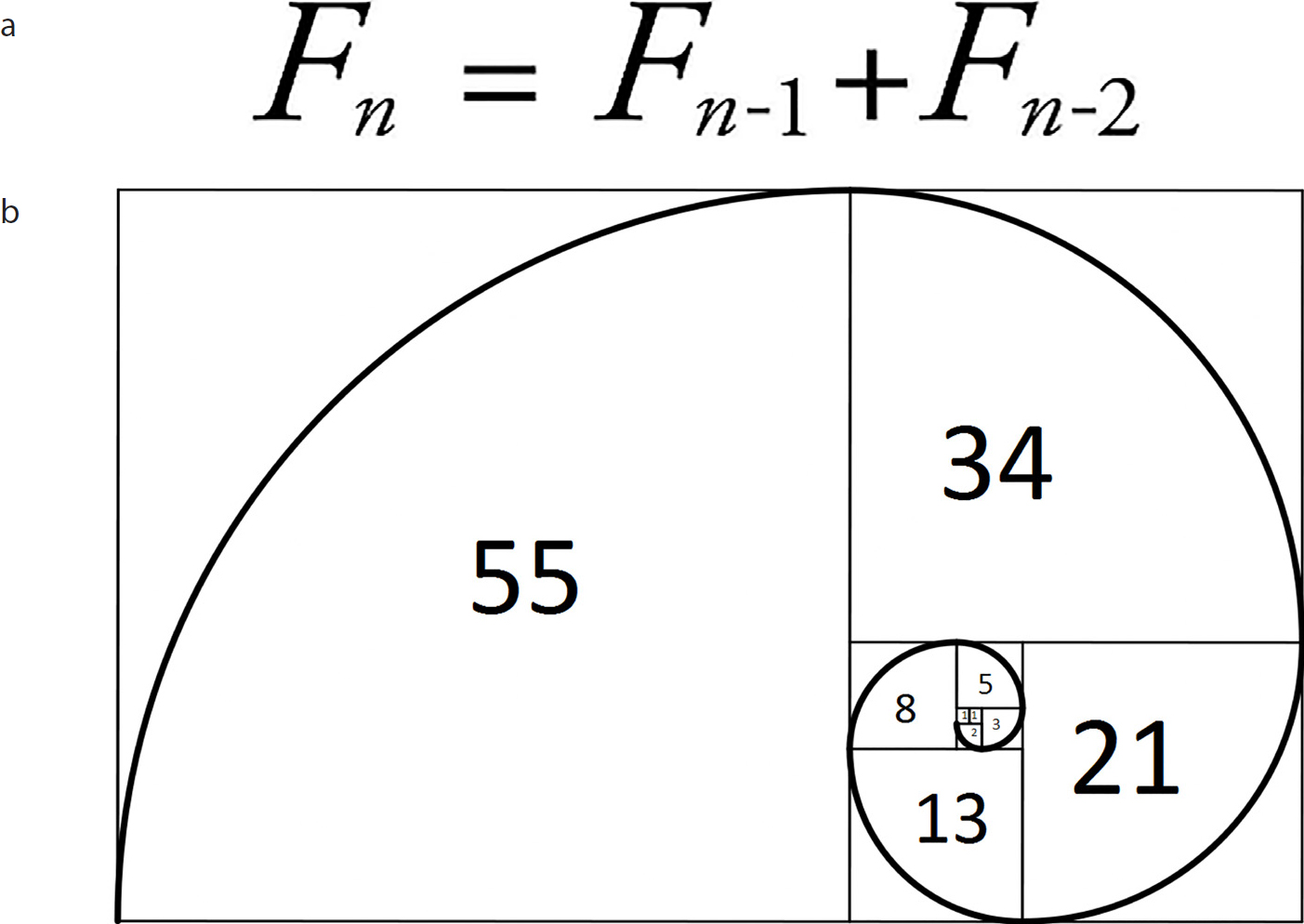
Borelli and Berneburg defined the ‘ideal’ face as one that has:15
They found attractiveness to increase with average features and symmetry. Moreover, particular features, such as childlike characteristics, together with aspects of maturity and expression, make a female face appear especially beautiful. They found the attributes that contribute to attractiveness of a man's face to be more controversial, with features such as a strong chin unlikely to increase attractiveness.
Numerous studies have highlighted the importance of the facial profile in orthodontic treatment planning, with some arguing that the aesthetic ‘ideal’ has remained unchanged for thousands of years.
Auger and Turley investigated the female soft tissue profile in fashion magazines during the 1900s, which revealed significant differences in anteroposterior lip position, amount of visible lip tissue, and interlabial angle over time, with the more recent groups displaying fuller and more anteriorly positioned lips. The results of this study suggest that standards for the aesthetic white female facial profile are not static and show a trend towards fuller and more anteriorly positioned lips.16
Perceptions of profile among clinicians and laypeople
People's perceptions of the most ideal facial profile vary amongst different ethnicities. Studies by Mafi et al, investigating the ideal facial soft tissue profiles between Iranians and Caucasians, found significant ethnic variation.17,18 This ultimately has clinical implications and should be considered not only for facial aesthetics, surgical and reconstructive procedures but, crucially, for orthodontic treatment planning.
Perceptions of facial profile and dental aesthetic variations between patients and clinicians has been extensively researched. A study of 892 subjects (16–24 year-olds) by Yin et al, conducted in China, found that young adults perceived their facial profiles to be significantly more straight and dental appearances more attractive than orthodontists.19 They also found a significant proportion of young female adults preferred a mildly convex facial profile (Class II skeletal pattern).
In contrast, Morar and Stein found that, in South Africans, extreme profile convexity was unappealing and females demonstrated a preference for extreme profile concavity (Class III skeletal patterns).20 This considerable variation in preference across different countries should be considered on an individual basis during orthodontic treatment planning and can be related to the patient's initial presenting complaint.
A study of 60 adolescent Turkish patients by Malkoc and Fidancioglu found that none of the parameters of golden proportions was associated with facial aesthetics according to both orthodontists and laypeople.21 They also found that orthodontists noticed the sagittal position of the lower jaw, the distance between the eyes and length of the face, whereas laypeople noticed only the distance between the eyes and length of the face.
Skeletal pattern attractiveness
A study comparing perceptions of facial profile by three groups of clinicians (orthodontists, maxillofacial surgeons and dental students) found that orthodontists and maxillofacial surgeons were significantly more likely to choose a Class I skeletal pattern as the most attractive profile. They also reported that female assessors were more likely to rank a Class I profile as the most attractive.22
Furthermore, Jiang et al found that the greater the retrusion or protrusion of the chin and the shorter or longer the chin length, the lower the rate of perceived attractiveness and the greater the desire for surgery, as viewed by clinicians, dental students and orthognathic patients.23
A study, conducted in Germany by Hönn et al, investigating perceived attractiveness of Class I, Class II and Class III profiles, revealed that:24
Facial profile attractiveness has also been investigated amongst individuals with differing levels of education. Hönn et al found the straight-average face was perceived as the most attractive by both university graduates and non-graduates.25 This was followed by mildly and moderately retrognathic, as well as mildly prognathic profile lines. Similar to other studies, the authors reported that both groups perceived extremely prognathic and retrognathic profiles as the least attractive. Interestingly, they found university graduates to be more critical in their ratings than non-graduates.
Satisfaction with dentofacial appearance
Satisfaction with facial form and profile has also been investigated. A cross-sectional study by Eslami et al, comparing aesthetic perception and satisfaction of facial profiles among male patients with different profiles, found subjects with straight and concave profiles showed the highest and the least satisfaction with their own profiles, respectively.26 Participants selected ‘retrognathic maxilla, prognathic mandible’ as the least attractive profile and ‘straight’ and ‘bimaxillary dentoalveolar retrusion’ as the most attractive silhouettes. Additionally, they found that most participant's diagnosis of their own profile differed from that of a professional.
Sena et al investigated facial profiles on stereotyping in society.27 They found that the sagittal position of the mandible had a strong influence on the level of facial attractiveness, and that the most attractive profiles were also perceived as more favourable to be hired for a job and as having the best socio-economic status.
Conclusions
After diving deep into philosophy and classicism hoping to find an answer for what defines beauty, it has become clear that ‘ultimate beauty’ is indeed nothing short of superstition. It is also evident, although not trenchant, that facial beauty is not an exact science but rather, a complex interplay between objective standards and subjective views. It has been shown that the common denominator shared by those individuals consistently judged to be the most attractive/beautiful, is the fact that their facial proportions tend to be resemblant of the mean of the population, within their racial group.

